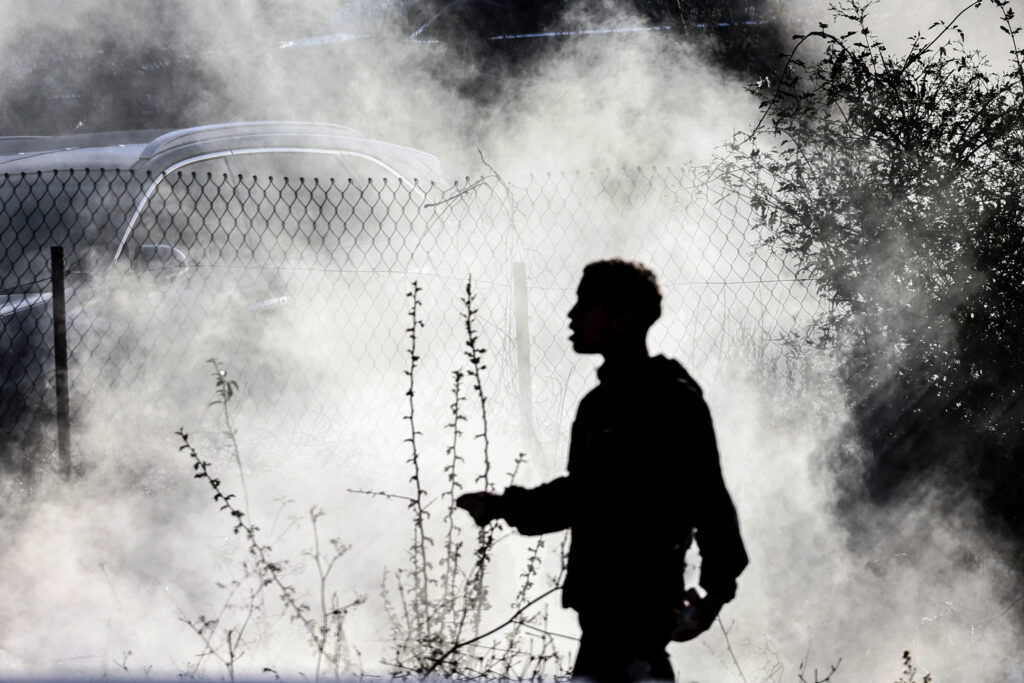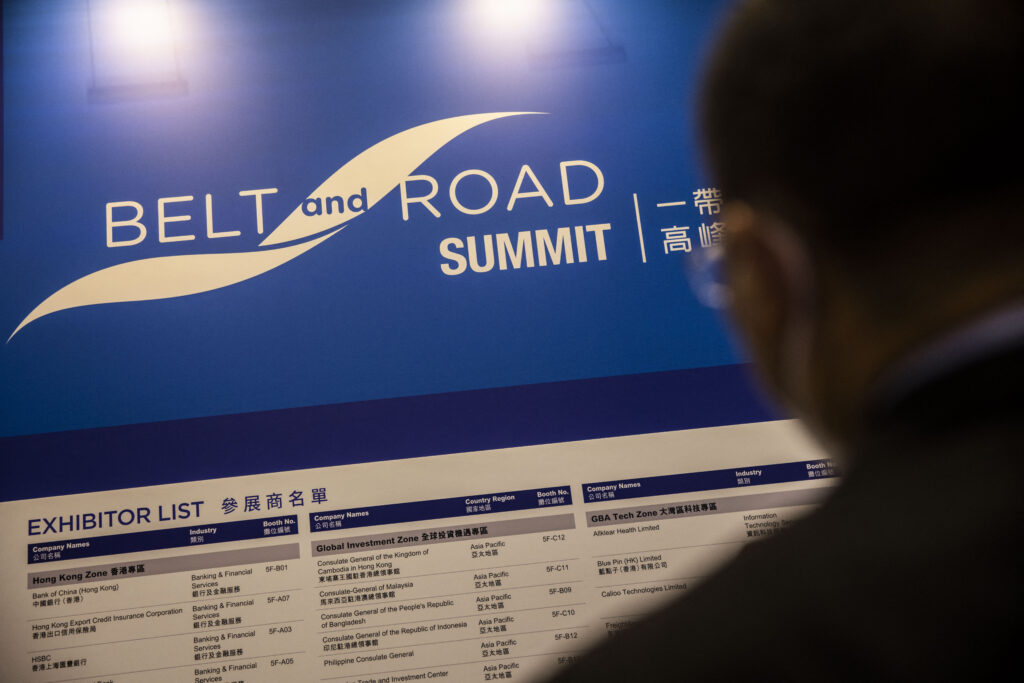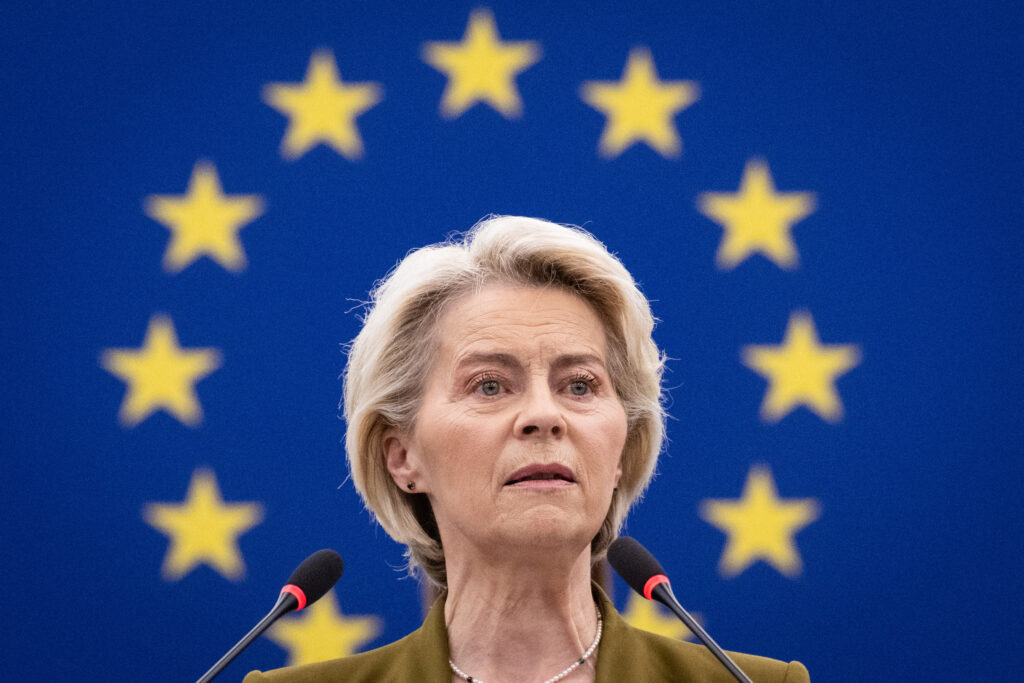CLICK HERE FOR THE PDF.
By Silvio Ferrari
The Vatican’s policy on the Jerusalem question cannot be understood without being placed in a broader context. First, we cannot overlook the peculiar character of the Holy See, which is a religious and political actor at the same time. Starting from the Second Vatican Council (1962−1965), dialogue with other religions and other Christian denominations has been a significant element of the Holy See’s Jerusalem policy, often equal in importance to the Holy See’s political relations with the Middle Eastern states. Second, we need to keep in mind that the Vatican’s interest in the Holy Land goes back to long before the Jerusalem question came into existence. The preservation of the Christian holy places and the protection of the local Catholic community have been for many centuries the main objectives of the Vatican in the region, and the Holy See’s approach to the Jerusalem question is strictly related to these two goals. Finally, we must consider the general political context in which the Vatican has been conducting its diplomatic activities. The issue of the holy places and the Christian community in the Holy Land had long been addressed through bilateral agreements between Christian states and the Ottoman rulers. Only since the dissolution of the Ottoman empire have these problems (together with the status of Jerusalem) been “internationalised”, becoming the subject of treaties and conventions signed by a plurality of states and national or international organisations. More recently, this trend seems to have been reversed again in favour of the bilateral approach. The Vatican’s own approach to the Jerusalem question thus had to take these changes into account and adapt to them. This paper analyses how these different elements have combined to determine the Jerusalem policy of the Holy See.
Background
Historically, granting special status to Jerusalem was not the first objective of the Vatican’s policy on the Holy Land. The protection of the holy places and the protection of the Catholic community were the first concerns, and, during the Ottoman period, these goals were pursued through a third party, a Catholic state that acted as the protector of Catholic interests in the Holy Land. France played this role for a long time, concluding a number of capitulations with the Ottoman rulers that ensured a special regime for Catholics and Catholic places of worship. Russia acted as the protector of the Orthodox community and its interests in the Holy Land. Through the understanding reached among the religious communities known as the Status Quo of 1757, the Orthodox community had gained the upper hand in the ownership and management of many holy places in Jerusalem and the surrounding region. But control of the holy places remained a constant source of strife between members of the Catholic and Orthodox churches in the Holy Land, with the Ottoman government acting as an (interested) arbiter of their disputes. In fact, one of several causes behind the dispute between Russia and the Ottoman rulers that led to the Crimean War (1853−1856) was the issue of control over the holy places.
Origins of the Jerusalem Question and Internationalisation Plans
The question of Jerusalem came to the forefront after the First World War in connection with the dissolution of the Ottoman empire and the Balfour Declaration (1917) announcing British support for the establishment of a national home for the Jewish people in Palestine. Earlier, the Sykes−Picot agreement (1916) between the British and the French had envisaged an international government for a large section of Palestine, including Jerusalem, Bethlehem and Nazareth. The agreement was never implemented and Palestine, including Jerusalem, was entrusted to the British mandate, but the idea of an international regime for Jerusalem did not disappear in political and diplomatic circles and resurfaced after the Second World War. The plan for the partition of Palestine between Jews and Arabs, approved by the United Nations in 1947, included the internationalisation of Jerusalem and Bethlehem and their direct rule by the United Nations. At this juncture (and again two years later), the Holy See played a key role, mobilising several Catholic states to support the plan, which was opposed by the Arab countries and reluctantly accepted by the Jewish Agency for Israel, the Zionist organisation that played a central role in the founding of the state of Israel. The Vatican considered the internationalisation of Jerusalem as a recognition of its universal significance and also as a way of maintaining the Christian presence in the city and control of its sacred places. However, the UN plan remained on paper (as did a subsequent UN resolution of 9 December 1949), and Jerusalem was divided between Jordan and Israel. Subsequent attempts to resurrect the internationalisation plan failed, mainly owing to the strong opposition of Israel and Jordan, which shared control of Jerusalem, with the latter in possession of the Old City and its holy places.
The First Turning Point in the Holy See’s Jerusalem Policy
The Holy See had made a huge political and religious investment in the creation of a corpus separatum (or separate entity) under international administration for Jerusalem. The Pope had published two encyclicals justifying the demand for internationalisation on the basis that Jerusalem preserved the “memorials of the Life and Death of the Divine Redeemer”.[1] Vatican diplomats then exerted strong pressure on the governments of Catholic countries to secure a vote in favour of the internationalisation plan at the UN General Assembly. During negotiations at the General Assembly, the Holy See rejected a plan for the “functional” internationalisation of Jerusalem (that is, a regime of extraterritoriality for the holy places), considering it an unacceptable watered-down compromise. It is, therefore, understandable why the Holy See did not budge from its position subsequently even when political support for territorial internationalisation started declining. However, Vatican diplomats were aware that this position was increasingly untenable and took the first opportunity to revise the Vatican’s strategy. The opportunity to do so was provided by the Six-Day War (1967) and the fall of the whole of Jerusalem into Israeli hands. In a speech devoted to Jerusalem, Pope Paul VI avoided mentioning territorial internationalisation and in its place proposed an internationally guaranteed special statute that would protect the holy places, grant the civil and political rights to members of all religious communities and “take into account” the historical and religious character of Jerusalem.[2] Although formulated in cautious diplomatic language, the shift was evident: no more a corpus separatum, but a special statute which did not imply any physical separation of the city from the state (or states) that exercised sovereignty over it.
Another new element worth highlighting in the speech of Pope VI is that a special statute for Jerusalem was no longer demanded on the strength of the Christian memorials preserved in the city. It is was justified with a different argument instead, namely, the “historic and religious personality of Jerusalem”, a city that enshrines the holy places “considered as such by the three great monotheistic religions, Judaism, Christianity and Islam”.[3] In the following years the Pope repeatedly underlined the uniqueness and universal significance of Jerusalem as the converging point of these three religions, and this new approach was finally formalised in a note drawn up by the Vatican’s Permanent Observer at the United Nations. In this document, the demand for “a special statute, internationally guaranteed for Jerusalem” was explained with the intention “to preserve and guarantee to the Holy City its identity as a religious centre, unique and outstanding in the history of the world, in such a way that it may become a stable place of encounter and concord for the three great monotheistic religions”.[4] In this perspective, the fate of the Christian holy places and of the Catholic community was placed within a wider horizon that embraced also Jews and Muslims.
The last step to keep alive the project of an internationally guaranteed statute was taken in 1999, when Cardinal Jean-Louis Tauran restricted the area to be subjected to the proposed statute to the Old City of Jerusalem. He was reported to have said:
“… with regard to the question of Jerusalem, the Holy See has always maintained that this question cannot and should not be reduced simply to one of unimpeded access to the holy places. The living dimensions of these places requires also (1) that the global character of Jerusalem as a sacred heritage common to the three monotheistic religions be guaranteed; (2) that religious freedom in all its aspects be defended; (3) that all the acquired rights of the various communities with regard to shrines, centers of spirituality and study, and charitable institutes be safeguarded; (4) that the maintenance and development of the respective religions be treated equally. In order that all of these may be guaranteed, the Holy See seeks a special internationally guaranteed statute for the most sacred part of the City of Jerusalem.”[5]
The Second Turning Point
The second turning point has no definite date. It is rather a process that started at the beginning of this century, when references to an internationally guaranteed statute for Jerusalem began becoming more infrequent in the statements of Vatican representatives. In their past allocutions to members of the diplomatic corps accredited to the Holy See, traditionally pronounced at the beginning of every year, popes would mention the need for this statute. In 2002, Pope John Paul II made a reference to “an internationally guaranteed special status for the most holy places in Jerusalem” (emphasis added), something less than the usual demand for an internationally guaranteed statute for Jerusalem.[6] Since then, any reference to any form of special status for Jerusalem was dropped and even mention of the city became sporadic.
More significantly, even events directly affecting the legal status of Jerusalem failed to prompt the Vatican to revive its old demand. In 2018, when US President Donald Trump announced his decision to transfer the US embassy from Tel Aviv to Jerusalem, Pope Francis limited himself to a general “appeal to ensure that everyone is committed to respecting the status quo of the city, in accordance with the relevant resolution of the United Nations”.[7] Nor was there any reaction from the Holy See when, in the same year, the Israeli Knesset approved the basic law known as “Israel as the nation state of Jewish people”, which defines Jerusalem as the “complete and united … capital of Israel”. The apostolic administrator of Jerusalem, the highest Catholic authority in the city, and the Assembly of the Catholic Bishops in the Holy Land criticised the law as discriminatory against the Palestinian citizens of Israel but did not mention the issue of Jerusalem.[8] From time to time, a low-ranking Vatican diplomat might hint at the internationally guaranteed statute of Jerusalem,[9] but, on the most important occasions, this topic has been completely overlooked. For example, the March 2019 declaration on Jerusalem signed by the Pope and King Mohammed VI of Morocco states that Jerusalem needs to be preserved as “the common patrimony of humanity and especially the followers of the three monotheistic religions, as a place of encounter and as a symbol of peaceful coexistence, where mutual respect and dialogue can be cultivated”. The statement also makes an appeal for the protection and promotion of “the specific multi-religious character, the spiritual dimension and the particular cultural identity” of Jerusalem. However, the demand for an international statute for the city is conspicuously absent.[10]
Conclusion
The evolution of the Vatican’s policy on Jerusalem can be better understood against the broader framework provided by the Vatican’s policy on the Holy Land. In the last 25 years the Holy See has established diplomatic relations with Israel (1993), Jordan (1994) and the state of Palestine (2017). During the same span of time, agreements have been concluded with Israel (1993) and the state of Palestine (2015). Although they do not directly address the Jerusalem question,[11] both agreements contain provisions concerning the holy places and the freedom of the Catholic community. All these diplomatic steps go in the same direction and show that the goal of giving Jerusalem an international status — even in the milder form of non-territorial internationalisation — has been set aside. Its place has been taken by a different diplomatic strategy grounded on bilateral conventions through which the Holy See aims to secure the two other goals it has long pursued, namely, safeguarding the holy places and safeguarding what remains of the local Catholic community. Beyond the rhetoric on the universal value and the unique character of Jerusalem, the Vatican knows that the best way to attain these goals is not through the United Nations or the European Union but through the establishment of solid political and diplomatic ties with the states that rule the Holy Land.
How should the Jerusalem policy of the Vatican be evaluated? There are two interpretations. One contrasts utopia with realpolitik, concluding that the dream of making an internationalised Jerusalem the institutional sign of peace and dialogue among the faithful of three religious communities has been shattered by the national interests of the local stakeholders. The other interpretation sees the evolution of the Vatican’s policy as an indication of its progressive “spiritualisation”. It interprets the Vatican’s abandonment of its demand for internationalisation as a renunciation of any “temporal” claim and as a recognition of the autonomy of the political realm, within whose borders the question of Jerusalem and its status should be addressed and confined. From this perspective, the burden of providing a visible expression of the uniqueness of Jerusalem shifts from the members of the (secular) international community to the faithful of the Jewish, Christian and Muslim religions, who bear the responsibility for overcoming their differences regarding the fate of the city and finding a suitable way to transform Jerusalem into a symbol of dialogue and unity.
About the Author
Professor Silvio Ferrari is a Professor of Law and Religion at the University of Milan. He was previously a visiting professor at the University of California, Berkeley, the Institute for Advanced Legal Studies at the University of London and the Ecole Pratique des Hautes Etudes in Paris. His main areas of interest are law and religion in Europe, comparative law of religions (particularly Jewish law, canon law and Islamic law) and Vatican policy in the Middle East. His publications in English include Religious Rules, State Law, and Normative Pluralism (with R Cristofori and R Bottoni; Springer, 2016), Routledge Handbook of Law and Religion (Routledge, 2015).
Image caption: The Custos of the Holy Land Francesco Patton (right), carrying the Relic of the Holy Crib of the Child Jesus, a gift from the Pope Francis to the Custody of the Holy Land, during a procession to the St Saviour Franciscan church in Jerusalem’s Old City on 29 November 2019. (Photo by Gali Tibbon / AFP)
Footnotes
[1] See the encyclicals Redemptoris Nostri Cruciatus, 15 April 1949, n. 9, and In multiplicibus curis, 24 October 1948.
[2] Acta Apostolicae Sedis, 1968, 25−26.
[3] Acta Apostolicae Sedis, 1968, 25−26.
[4] Report of the UN Security Council Commission Established under Resolution 446 (1979), S/13679, 4 December 1979.
[5] This statement by Cardinal Tauran was quoted by the Permanent Observer of the Holy See in a speech at the UN General Assembly. See The Roma Curia Secretariat of State, “Intervention of H.E. Archbishop Renato R. Martino at the United Nations on ‘United Nations Relief and Works Agency For Palestine Refugees in the Near East’ (3 November 1999)”, http://www.vatican.va/roman_curia/secretariat_state/documents/rc_seg-st_doc_03111999_palestine_en.html.
[6] Address of His Holiness Pope John Paul II to the Diplomatic Corps, 10 January 2002, http://w2.vatican.va/content/john-paul-ii/en/speeches/2002/january.index.htm.
[7] See John L Allen, Why Vatican won’t be joining U.S. on Jerusalem Embassy Row, in Crux, 16 May 2018, https://cruxnow.com
[8] See Francesca Merlo, Apostolic Administrator of Jerusalem stands against new Israeli law, in Vatican News, 1 August 2018, https://www.vaticannews.va/en/church/news/2018-08/israel-law-palestine-human-rights-discrimination-archbishop.html; Jeremy Sharon, Senior Catholic leadership calls on government to rescind nation-state law, in The Jerusalem Post, 5 November 2018, https://www.jpost.com/Israel-News/Senior-Catholic-leadership-calls-on-government-to-rescind-nation-state-law-571115.
[9] The last statement was made by Monsignor Simon Kassan, Chargé d’Affaires of the Vatican’s mission to the United Nations. He said the Vatican believes Jerusalem needs an “internationally guaranteed” special status, in order to ensure freedom of religion for the city’s inhabitants, “as well as secure, free and unhindered access to the holy places by the faithful of all religions and nationalities”. See John L Allen, Why Vatican.
[10] See Appeal by His Majesty King Mohammed VI and His Holiness Pope Francis regarding Jerusalem / Al-Quds the Holy City and a place of encounter, 30 March 2019, http://w2.vatican.va/content/francesco/en/travels/2019/outside/documents/papa-francesco-marocco-2019.html.
[11] The preamble to the agreement with the state of Palestine recalls the statement, included in the previous agreement between the Holy See and the Palestine Liberation Organization (2000), namely, “that an equitable solution for the issue of Jerusalem, based on international resolutions, is fundamental for a just and lasting peace…, and that unilateral decisions and actions altering the specific character and status of Jerusalem are morally and legally unacceptable”.




